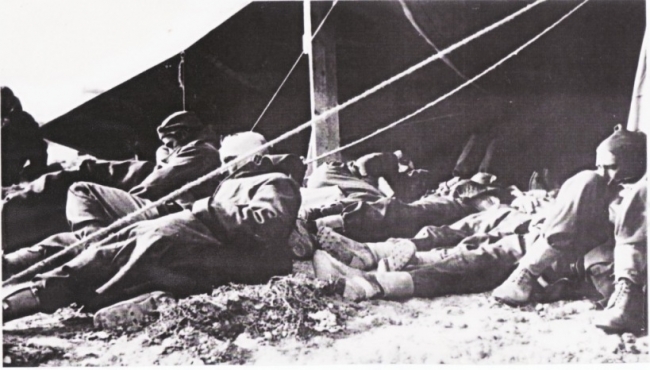
Overflow from a dressing station. This photograph was amongst Hixon Hamon's personal possessions. Hixon is the eldest brother of Pte Eruera Dennis Hamon who was admitted to the Mobile Surgical Unit (28 Māori Battalion) on the 25th of November 1941 and died 5 days later on the 30th of November 1941, aged 21 years. He is buried in the Halfaya Sollum War Cemetery, Egypt. Whānau members would scan war photographs in an effort to find a loved one. This will be why Hixon had this photograph. He was certain when questioned that this was his baby brother on the left with the beanie on and his knee drawn up. The original source and any other details are unknown.
Pearl Hamon Anderson Family Collection. Original source is unknown. If anyone can help here, please feel free to contact Te Awhi Manahi so that acknowledgement can be attached.
Update: 7 November 2010
Wounded New Zealanders at an Advanced Dressing Station near Belhamed, November 1941. Cliff Turner

Comments (5)
The Mobile Surgical Unit
Submitted by TeAwhi_Manahi on Sat, 05/12/2009 - 16:23
Wounded: Evening Post 12 Dec 1941
Submitted by TeAwhi_Manahi on Mon, 25/10/2010 - 18:55
In the captured Medical Centre, Nov 1941
Submitted by TeAwhi_Manahi on Mon, 08/11/2010 - 09:52
Cliff Turner
Submitted by aircrew on Sat, 23/02/2013 - 16:52
Cliff Turner
Submitted by aircrew on Sat, 23/02/2013 - 17:24